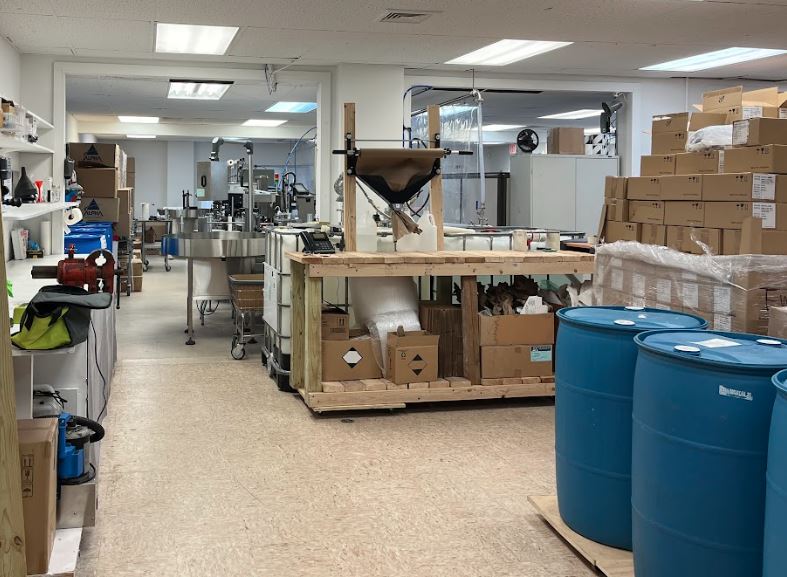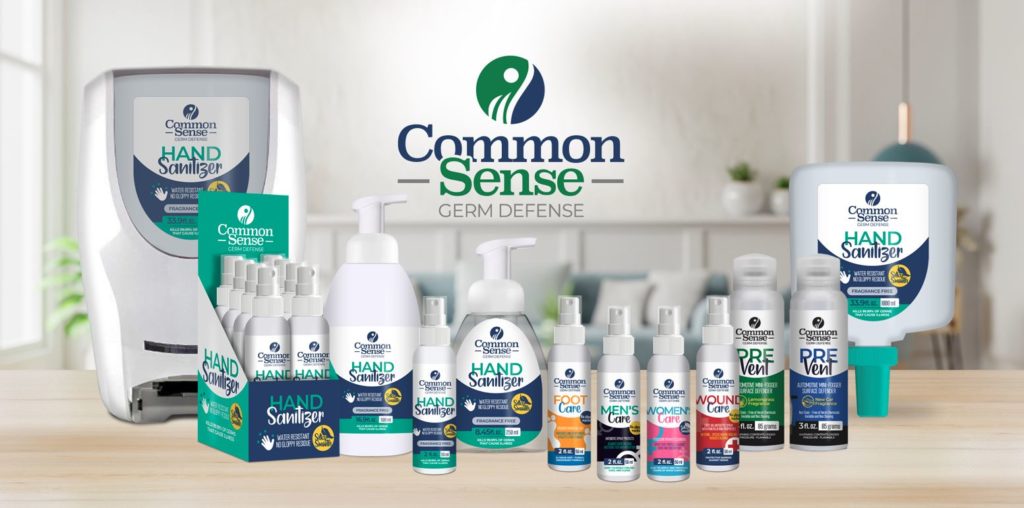Hand sanitizers have become a ubiquitous tool in the fight against infectious diseases, especially in the wake of the COVID-19 pandemic. They are convenient, easy to use, and can be carried around in pockets or purses. However, not all hand sanitizers are created equal, and in some cases, they can even do more harm than good.
This is why government agencies play a crucial role in regulating the production and labeling of hand sanitizers. Let’s explore the regulatory agencies involved in hand sanitizer production and labeling, the regulations that govern their production and labeling, and the impact of government regulations on the safety and efficacy of hand sanitizers. Find out how government agencies work to ensure the quality and safety of the hand sanitizers we use every day.

With the continuing rise of bacteria and viruses, sanitizers have become a necessary part of everyday life. But with so many products on the market, it can be difficult to know which ones are safe and effective. That’s why government agencies play an important role in regulating the production and labeling of hand sanitizers.
Agencies like the FDA and the EPA make sure that manufacturers adhere to certain standards when producing these products and ensure they contain accurate information on their labels. This helps consumers and organizations like the World Health Organization, identify what ingredients are present in each product as well as how effective they might be against germs or other contaminants.
Government regulations help protect consumers from potentially dangerous ingredients that may not be listed on labels or could cause adverse reactions when used improperly. By adhering to strict guidelines, these organizations promote consumer safety and help to prevent a public health emergency while helping users make informed decisions about their health care needs.
Benefits of having strict regulations for hand sanitizer products
Strict regulations for these products is essential because it ensures only quality ingredients are used in the manufacturing process of hand sanitizer and that the public can rely on these products to meet their safety needs. It removes any potentially hazardous counterfeits attempting to pass as certified products, providing consumers and health care professionals with peace of mind that they can trust the sanitizing capabilities of the sanitizers they are using. It also allows people who are prone to allergies to find low allergen messaging on labels so they can verify which products suit their individual needs.
Regulations also provide greater transparency on product claims so customers have a satisfactory experience when making a purchase. Strict rules for hand sanitizer products, especially in light of the current public health emergency, guarantee the safety, confidence and convenience of customers’ shopping experiences and health needs.
how government agencies enforce their guidelines for hand sanitizer production and labeling
Regulatory Agencies
There are several regulatory agencies involved in the production and labeling of hand sanitizers, each with a unique set of responsibilities. The two primary agencies involved in hand sanitizer regulation are the Food and Drug Administration (FDA) and the Environmental Protection Agency (EPA).

The FDA is responsible for regulating sanitizers produced by drug manufacturers, that are intended for use on human skin, and the EPA regulates those intended for use on surfaces. The FDA requires that hand sanitizers contain at least 60% ethanol or 70% isopropanol to be effective against germs, and they also require sanitizers to undergo testing to ensure their safety and efficacy. In addition, the FDA regulates the labeling and advertising of hand sanitizers to ensure that they are accurately labeled and do not make false or misleading claims.

The EPA, on the other hand, regulates sanitizers that are used on surfaces and not on human skin. The EPA requires sanitizers to undergo testing to ensure their safety and effectiveness and also regulates the labeling of these products.
By working together, the FDA and EPA help to ensure that sanitizers are safe, effective, and accurately labeled, providing consumers with the best possible protection against germs and infectious diseases.
The United States Food and Drug Administration (FDA) regulates hand sanitizer products. The FDA requires manufacturers to include certain active ingredients in all over-the-counter (OTC) drug products, including isopropyl alcohol-based hand sanitizers. The FDA also requires that all OTC drug products must be properly labeled with an approved label that contains all required information regarding the product’s active ingredients, expiration date, warnings, directions for use, etc. In addition to this, thanks to FDA guidance it is set in stone that all OTC drug products be tested prior to distribution in order to make sure they meet established safety and quality standards.
Regulations for Hand Sanitizer Production
To ensure that alcohol based hand sanitizers are safe and effective, there are several regulations that must be followed during the production process. These regulations are enforced by the FDA and EPA, and failure to comply with them can result in fines, product recalls, or even legal action.
Some of the key regulations for sanitizer production include:
- Good Manufacturing Practices (GMPs):
These are guidelines that must be followed to ensure that hand sanitizers are produced in a clean and safe environment, using approved raw materials and ingredients, and under controlled conditions. - Production standards:
Sanitizer production must document key steps and meet certain standards to ensure their safety and effectiveness, including the required concentration of the active ingredient and specific pH levels. - FDA and EPA approvals:
Hand sanitizers must undergo testing to prove their safety and effectiveness before they can be sold to consumers. The FDA and EPA have specific formula approval processes that manufacturers must follow to obtain their approvals.
By adhering to these regulations, manufacturers can ensure that their alcohol based hand sanitizers are safe, effective, and meet the standards set by the regulatory agencies and the world health organization. Consumers can have confidence in the quality and safety of the hand sanitizers they use, knowing that they have been produced in compliance with these regulations.

Regulations for Hand Sanitizer Labeling
In addition to regulating the production of alcohol based hand sanitizers, government agencies also closely monitor their labeling. Proper labeling is critical to ensure that consumers can make informed decisions about the products they use and can trust that the products they are purchasing are safe and effective.
The FDA and EPA have specific regulations for the labeling of hand sanitizers. These regulations require that labels contain certain information, including:
- The name of the product
- The name and address of the manufacturer or distributor
- The type of product (e.g. hand sanitizer, surface sanitizer)
- The active ingredients and their concentration
- The directions for use
- The warnings and precautions (e.g. flammability, not for internal use)
The labeling of hand sanitizers must also comply with specific font sizes and formatting requirements, making it easy for consumers to read and understand the information provided.
Manufacturers must ensure that their hand sanitizer labels meet all of the FDA and EPA requirements. Failure to comply with these regulations can result in fines, product recalls, or legal action.
By regulating the labeling of hand sanitizers, the government helps to ensure that consumers have access to accurate and reliable information about the products they use. This helps to prevent the spread of infectious diseases and protect public health.
Labeling Requirements
It is important to note that in addition to the requirements set forth by regulatory agencies like the FDA, there are other labeling requirements as well. Many countries require that any product containing alcohol must have a warning label on its packaging stating that it is flammable and should not be used near open flames or other sources of ignition.
Manufacturers must also include instructions for proper use on each bottle or container of hand sanitizer in order to ensure maximum effectiveness. Any product containing alcohol is required to display an expiration date so consumers know when it is safe to use the product before it becomes ineffective or dangerous due to age.
Enforcement Mechanisms
Government agencies have several mechanisms in place for ensuring formula approval in compliance with their guidelines for sanitizer production and labeling. These enforcement mechanisms include random inspections of manufacturing facilities as well as mandatory recall orders if any issues are found with a particular product or batch of products being sold on store shelves or online retailers. In addition, any manufacturer found in violation of these regulations may face hefty fines or even criminal charges depending on the severity of the violation(s).
Tips to ensure you are using safe and effective products when it comes to hand hygiene
Choose The Right Product
The type of product you use matters when it comes to proper hand hygiene. Be sure to look for sanitizers or soaps that include at least 60% alcohol content, as this will kill any germs that may be present on your hands. It is also important to choose a product that doesn’t contain any harsh chemicals, like triclosan or formaldehyde, which can cause skin irritation or dryness over time.
Common Sense long lasting hand sanitizer has the benefit of leaving your hands feeling silky smooth after you apply it. Since the effects of Common Sense last for hours, you don’t need to apply as often throughout the day so the drying and irritating effects of the other leading brands are effectively eliminated. These will keep your hands hydrated and feeling soft after washing them multiple times per day.
Practice Good Habits
In addition to using the right products, there are certain habits you should practice in order to ensure you are using safe and effective methods of hand hygiene. It is essential to wash your hands thoroughly with soap and water for a minimum of 20 seconds after coming into contact with surfaces outside of your home as well as before eating or touching your face. You should also avoid touching surfaces in public places whenever possible, such as doorknobs and elevator buttons, and instead use a disposable tissue if available. Furthermore, keep a bottle of hand sanitizer with at least 60% isopropyl alcohol content in your purse or pocket whenever you leave the house so that you can quickly sanitize your hands if necessary while out in public.
The Impact of Regulatory Agencies on Hand Sanitizer Production and Labeling
The federal agencies responsible for the regulation and oversight of hand sanitizer production and labeling play a crucial role in ensuring that these products are safe and effective. Their oversight helps to protect public health by ensuring that sanitizers are produced with the most accurate method in a way that meets specific standards and contains the right ingredients in the right concentrations for formula approval. By regulating the labeling of hand sanitizers, they also help to ensure that consumers have access to accurate and reliable information about the products they use.
The impact of regulatory agencies can be seen in a number of ways. For example, since the public health emergency outbreak of COVID-19, the FDA and EPA have been working closely with manufacturers to ensure that there is an adequate supply of hand sanitizers to meet the increased demand. They have also issued guidance documents and temporary policies to help streamline the approval process for new hand sanitizer products.
However, despite the important work of these regulatory agencies, there have been cases of non-compliance and fraudulent labeling in the hand sanitizer industry. In response, the FDA and EPA have taken action to protect consumers, including issuing warning letters, recalling products, and pursuing legal action against companies that violate regulations.
Final Thoughts On The Roll Of The FDA and the EPA in the Production and Sale of Hand Sanitizer
The impact of regulatory agencies on hand sanitizer production and labeling is significant. By working to ensure that these products are safe and effective, they help to protect public health and prevent the spread of infectious diseases.
Proper hand hygiene is essential for preventing the spread of germs and keeping yourself healthy. It is important to choose a product that contains at least 60% alcohol content in order to ensure it can effectively kill any bacteria or viruses on your hands. Additionally, be sure to practice good habits such as washing your hands thoroughly with soap and water after coming into contact with surfaces outside of your home and avoiding touching public surfaces when possible. Lastly, keep a bottle of hand sanitizer with at least 60% alcohol content handy so you always have access to effective sanitation while away from home. Choose Common Sense long lasting Hand Sanitizer to protect yourself against potential health risks associated with poor hand hygiene practices.

